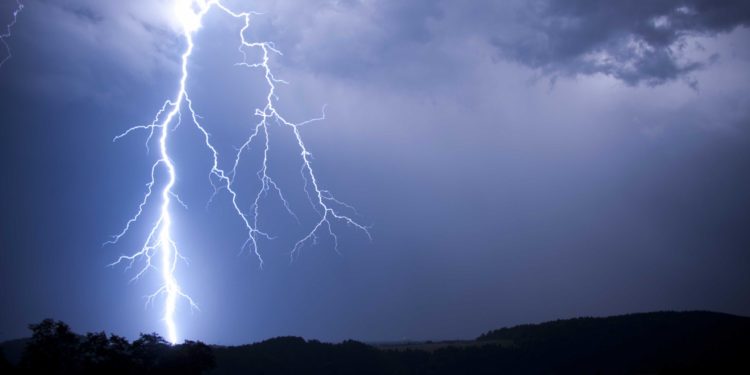SCIENTIFIC AMERICAN
Climate change, global pandemics, bioterrorism, nuclear warfare, artificial intelligence run amok—today’s world offers no shortage of homegrown existential risks to worry about. But one of the most worrisome hazards doesn’t come from Earth at all. Rather, it’s from the astronomical numbers of asteroids and comets that come close to our planet as they orbit the sun. Most of these objects pass by harmlessly, and the vast majority are too small to cause a global crisis even if a cosmic collision occurs, but every now and then a big one hits, to cataclysmic effect. For proof, look no further than Chicxulub, the “Crater of Doom” carved into the Yucatan Peninsula seafloor 66 million years ago by a 10-kilometer-wide asteroid that led to the mass extinction of more than half of Earth’s species, including the dinosaurs. It happened before, and sooner or later it’s likely to happen again—unless, that is, we see the next doomsday impactor coming and manage to somehow prevent its apocalyptic planetfall.
The threat may seem like pure science fiction, but under the umbrella term of “planetary defense,” scientists and engineers around the world treat it with absolute seriousness. In his latest book, How to Kill an Asteroid: The Real Science of Planetary Defense, acclaimed science journalist Robin George Andrews offers a sometimes scary, often humorous and always erudite account of the people and projects striving to safeguard Earth from space rocks and help humanity avoid the dinosaurs’ dismal fate.
Scientific American spoke with Andrews about the state-of-the-art in asteroid detection and deflection techniques, the worst-case scenarios and the reasons for optimism about averting disaster.
[An edited transcript of the interview follows.]
So, Robin, I’ve got to start out with a couple of burning questions. First, is there a story behind this book’s amazing cover art? Are those people real scientists? One of them looks suspiciously like Paul Rudd. Second, why do you start the book off with a hypothetical asteroid wiping Seattle off the map? Do you just have a grudge against grunge rock, cloudy skies and overpriced coffee or what?
Ha, yeah, there’s not much back story to the art, and no, those aren’t real people! I asked my publisher if we could make the cover look like a poster for a 1980s sci-fi movie, and its graphics team agreed and packed in as many tropes as possible. I think it works well because this is a story about scientists and engineers who are literally trying to save the world—how much more Hollywood heroism can you get? Yet at the same time, the movie-style cover plays with this strange public perception of absurdity about asteroid and comet impacts. Most people are aware of these things based on well-known sci-fi movies—Armageddon, Deep Impact, Don’t Look Up, and so on. But they don’t really consider impacts as things that actually happen—they act as if an asteroid or comet destroying a city is something that only happens in fiction. I can’t think of any other natural disaster that has this weird combination where everyone knows about it but most people don’t treat it as being real.
As for Seattle…, I’ve never been there, and I have nothing against it! I just wanted a suitably cinematic opening, and a city being destroyed works well for that, but I didn’t want to pick somewhere like New York City or London that’s the typical, obvious target for such things—because the point is, it could happen anywhere, right? I did want it to be an American city, though, because any global response would probably be American-led.
Presumably you’re picking the U.S. as the leader because of historic and recent NASA projects, such as the Double Asteroid Redirection Test (DART), which in 2022 slammed a spacecraft into a small asteroid and slowed its orbit by about a half hour. You spent a lot of time with members of the DART team for the book and were even at mission control when the impact happened. What attracted you to that as a focus? And it’s not just the U.S. in the game, right?
I was covering the mission (for Scientific American, in fact!), and the way that [DART co-investigator] Andy Rivkin talked about it really resonated with me. DART was about punching an asteroid so hard that it reconsiders its plans, which is great practice for saving the world from future threatening space rocks. And because the whole point of the mission was for the spacecraft to die, that made it weirdly appealing in a storytelling sense. Everyone on the team was absolutely sweating bullets over this thing getting to the launchpad and then safely to its destination, but in the end what they all wanted was for their precious creation to be destroyed. And it became a genuine feel-good story when everything went even better than planned.
It’s not just DART that has the U.S. at the forefront—it’s also projects like the ground-based Vera C. Rubin Observatory, which should, among other things, discover many potentially hazardous near-Earth objects (NEOs) once it starts observations later this decade, and NASA’s NEO Surveyor mission, which, after it launches in 2027, will use infrared imaging to spot most of the remaining undiscovered NEOs that are 140 meters or larger in size. Those are the so-called city-killers that lots of scientists worry about—small enough to be missed by past surveys but large enough to wreak havoc on Earth. The asteroid that DART smashed into, Dimorphos, was city-killer-sized. And NASA’s also sending one of its preexisting spacecraft, now renamed OSIRIS-APEX, to sidle up to and study another Earth-approaching asteroid, Apophis, during a close pass by our planet in 2029.

Connect with us on our socials: